

 The respect for a fine wine
The respect for a fine wine
Wine drinking has been democratized in the last 50 years. There are today wines in all price ranges, for all budgets, for all kinds of consumers. Screwcaps and bag in boxes have eliminated the ceremonial opening and serving of a wine. But one thing remains.
The respect for the “fine” wine. Or perhaps one should call it reverence? It sometimes verges on the religious… Old vintages, famous producers, famous vineyards. It happens to all of us at some point. A kind of reverence for the wine when you realize you have a grand cru or something similar in the glass.
Wine is a beverage. But wine is not “just” a beverage. If it were, there would be no wines in such extreme price ranges as there are. A wine can never be as good in itself – as “just a drink” – that it is worth 100, 500, 1000 euro or more. You pay for the uniqueness of a specific wine that is made in small quantities, or because it is world famous, or because it comes from a historic vineyard etc. Nothing wrong with that. But you have to see the label when you drink it and you have to know, understand, why the wine is so costly. To taste such blind wine is pretty useless (or interesting, depending on your point of view…). The taste alone does not motivate the price. You drink an experience, not just a glass of wine.
Perhaps these mega-expensive wines would not fare well in a blind tasting. Anything can happen in a blind tasting. A wine that costs 10 euro can get a higher score than one that costs 100 euro. In a blind tasting you will never consider anything worth more than a maximum of, say, 40 euro. (Nothing wrong with that, nor is it anything that should surprise you. Everyone’s judgement is influenced by knowing the name of the wine in the glass.)
On the other hand, this is precisely why wine is such a fascinating drink. There is a story behind it. It need not be grand history that goes far back in time. Sure, it can be interesting to know which Napoleon’s favourite wine was. But it is even more interesting to hear today’s wine growers tell you how passion and ambition can produce great wines. At prices that don’t have to be on par with exclusive antiques.
Britt & Per
PS: Recommend to your friends to read the Brief !
– – – – –
What’s on at BKWine Tours
- Champagne, September 14-18
- Bordeaux, September 28 – October 2
- Douro Valley, October 12-16
- Chile and Argentina in South America, January 28 – February 12, 2017
- South Africa, February 24 – March 7, 2017
For more information please contact us on email or on phone (we’re on French time), or go to our wine travel site on www.bkwinetours.com!
We also make custom designed wine tours – on-demand tours for you and a group of friends, for your company (maybe to scout new winegrowers?), for a special event… We can combine winery visits and wine touring with other activities: gastronomic workshops, visit to an oyster farm, truffles hunting, cheese making, and more. More info on the custom designed and bespoke BKWine wine tours and travel here!
From the World of Wine
Briefs
In short, news and stuff from the world of wine.
No California Champagne in Napa Valley
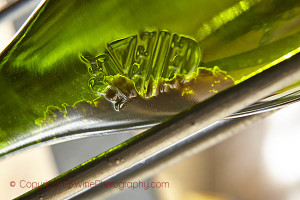 Despite persistent attempts by France to bring about a ban, it is still permissible for Californian winemakers, under certain circumstances, to call their sparkling wine “California Champagne” (but not within the EU of course!). At the French Trade Minister’s visit to Napa Valley earlier in June, however, the wine growers there made it clear to him that in Napa Valley, they don’t.
Despite persistent attempts by France to bring about a ban, it is still permissible for Californian winemakers, under certain circumstances, to call their sparkling wine “California Champagne” (but not within the EU of course!). At the French Trade Minister’s visit to Napa Valley earlier in June, however, the wine growers there made it clear to him that in Napa Valley, they don’t.
Napa Valley is also a name that suffers abuse by other wine regions and, like Champagne, Napa spend large sums every year to prevent such abuse. The producers in Napa Valley understand the importance of protecting an origin. However, there are still producers in Napa Valley that call their fortified wines port. This is just as bad of course as calling a sparkling wine champagne. Apparently they are trying to find an alternative name. Read more on winesandvines.com
Dramatically shrinking vineyards in Italy
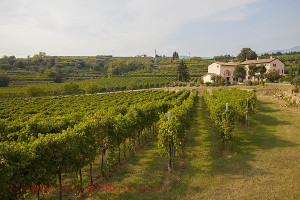 I came across some interesting statistics about Italy a while ago. It shows how the Italian vine acreage has decreased over the past 40 years. The decrease is dramatic. In 1970 there were 1.3 million hectares of vineyards in Italy. In 2010 the figure had dropped to 663,000, a reduction of over 600,000 hectares, ie a decrease of almost 50%.
I came across some interesting statistics about Italy a while ago. It shows how the Italian vine acreage has decreased over the past 40 years. The decrease is dramatic. In 1970 there were 1.3 million hectares of vineyards in Italy. In 2010 the figure had dropped to 663,000, a reduction of over 600,000 hectares, ie a decrease of almost 50%.
Piedmont has shrunk from 97,000 to 47,000 hectares, Campania from 50,000 to 23,000, Tuscany from 121,000 to 59,000, Puglia (Apulia) from 190,000 to 107,000, Sardinia from 65,000 to 18,000, etc. Worst hit, however, has been the region closest to the Rome, the capital. Lazio has next to vanished with a decline from 106,000 to 17,000 hectares! Most likely a lot of the lost hectares produced rubbish wine. But still. Read more revuesshs.u-bourgogne.fr
The world’s biggest rosé producing countries
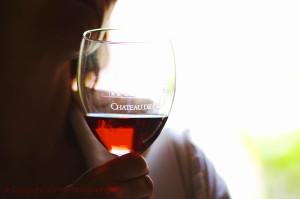 It is summer time and people drink tons of rosé wines. In 2014 the world produced a total of 24.3 million hectolitres of rosé (sparkling rosé not included). This was a rise by 16% from 2002. But those of you who do not particularly like rosé, don’t despair. This is still only 9.6% of the total world wine production.
It is summer time and people drink tons of rosé wines. In 2014 the world produced a total of 24.3 million hectolitres of rosé (sparkling rosé not included). This was a rise by 16% from 2002. But those of you who do not particularly like rosé, don’t despair. This is still only 9.6% of the total world wine production.
France is by far the biggest rosé producing country. Italy, a country that produces as much wine as France, is far behind. Rosé has not really caught on in Italy. One wonders why? France makes 7.6 million hectolitres of rosé of the year, which is about 16% of the total wine production in the country. (Source: OIV)
Rosé wine countries, percent of the world production of rosé
- France, 30%
- Spain, 21%
- USA, 14%
- Italy, 10%
- South Africa, 3%
- Germany, 2%
Caviar d’Aquitaine with Sauternes wine
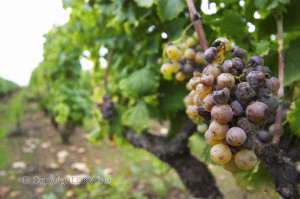 Caviar. It is not for every day eating, but it is delicious. Not least the caviar from Bordeaux. In the past, there were wild sturgeons in the Gironde. But today the Bordeaux caviar, the caviar d’aquitaine, comes from farmed sturgeon. It takes about ten years from the birth of the fish until the valuable caviar can be harvested from the females, approximately one kilogram per fish.
Caviar. It is not for every day eating, but it is delicious. Not least the caviar from Bordeaux. In the past, there were wild sturgeons in the Gironde. But today the Bordeaux caviar, the caviar d’aquitaine, comes from farmed sturgeon. It takes about ten years from the birth of the fish until the valuable caviar can be harvested from the females, approximately one kilogram per fish.
This interesting short video shows how the process works. The video was made in collaboration with the excellent Château Guiraud in Sauternes, so naturally this is the suggested wine to drink with your caviar. Maybe not a choice that comes first to your mind but but certainly worth a try. Watch the video and read more: agence-fleurie.com.
Perhaps you will get to taste wome caviar d’aquitaine on the Bordeaux wine tour this autumn. If not, at least you will taste some sauternes.
Black-rot in southern France
Black-rot is a difficult fungal disease that affects the vines when rainfall is plentiful. And it has been plentiful, so say the least, in France this spring and early summer. Black-rot (as it is called also in French, perhaps because the disease was the “imported” from North America in the late 1800s) attacks both leaves and grapes. This year it is been particularly present in parts of southern Rhone Valley and the Languedoc, where some vines have symptoms of both leaves, grapes, trunk and canes. Grenache, Syrah, Cinsault and Carignan are especially at risk.
The organic growers are particularly worried. They must work carefully in the vineyard and, for example, remove all infected branches and grapes. Spraying with copper can possibly help but black-rot is much more resistant to copper than downy mildew. Yet another plague for the wine growers in this year of horrors without end for the vineyards. Read more vitisphere.com. (Picture: grey rot.)
Wine terminology, as group dynamics, is not easy. Septic, what is it?
Everyone who tastes wine tend to develop personal references. Descriptions are often also specific to different groups. In Sweden and England Bordeaux wines are sometimes characterised with “stables”, but if you say that to a Bordeaux producer he will be offended. We had a question a while back about a term that sometimes occur in our wine news comments. What do we mean by “septic”?
Jack (who used the term) explains: “I use it quite often, perhaps more for my own memory rather than to clearly convey a fragrance experience for readers. I Googled it and found both a reference to the decaying stage in some parts of the body as well a reference to unclean drains (cf. septic tank and its fragrance connotations)… My own definition is close to these references but I would describe it as something in between the scent of a woven “band-aid” and an unclean bathroom drain. A bit like the smell of a plaster on a hand after it been stuck for a good while over a wound. Cf. also “antiseptic” associated with various liquids for cleaning wounds. The smell of some of these is also close an unused plaster (of fabric).”
When you taste wine all is permitted!
Vote for a new wine film: Burgundy: People with a Passion for Wine
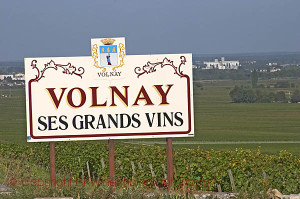 It almost seems as if it has become more popular to produce wine films than to publish wine books. The latest movie with wine as a theme is Burgundy: People with a Passion for Wine. It is of course about Bourgogne and all the winemakers that makes this into the fantastic region that it is. The film is made by Rudi Goldman. You can find more information on it here: rudigoldmanvideo.com. Particularly exciting is that it is competing in this month’s Los Angeles CineFest. This is an online movie competition where everyone can vote for a favourite film. So if you want to help Rudi win the competition go here and vote lacinefest.org. But voting closes on June 20, so hurry!
It almost seems as if it has become more popular to produce wine films than to publish wine books. The latest movie with wine as a theme is Burgundy: People with a Passion for Wine. It is of course about Bourgogne and all the winemakers that makes this into the fantastic region that it is. The film is made by Rudi Goldman. You can find more information on it here: rudigoldmanvideo.com. Particularly exciting is that it is competing in this month’s Los Angeles CineFest. This is an online movie competition where everyone can vote for a favourite film. So if you want to help Rudi win the competition go here and vote lacinefest.org. But voting closes on June 20, so hurry!
Features
Features that we have published during the past month, with lots of reading for you.
How do you make rosé? Facts and fails.
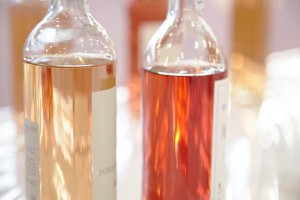 This is rosé season. Or should be. We’re having a rather cold summer in Paris. Rosé has in recent years become incredibly popular. Incredibly is the right word. But there seems to be some confusion on how rosé is made.
This is rosé season. Or should be. We’re having a rather cold summer in Paris. Rosé has in recent years become incredibly popular. Incredibly is the right word. But there seems to be some confusion on how rosé is made.
So let’s take a look at how rosé is made. There are three ways of making rosé:
- Direct pressing
- Maceration
- Blending
The three methods are different and have different effects on the result. Let’s take them one by one.
Read the rest of Per’s article on rosé wines on BKWine Magazine: How do you make rosé? Facts and fails.
Is manual harvest really better than mechanical harvest? No!
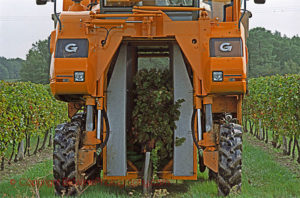 Yet another myth that it is time to kill: no, manual harvest is not better that machine harvest. We look at the facts and myths about hand and machine picking in a new article. It is not true that manual harvest is better than mechanical harvest. However, manual harvest can sometimes be better than mechanical harvest. But the opposite is also true: Mechanical harvest can be better than manual harvest. Sometimes.
Yet another myth that it is time to kill: no, manual harvest is not better that machine harvest. We look at the facts and myths about hand and machine picking in a new article. It is not true that manual harvest is better than mechanical harvest. However, manual harvest can sometimes be better than mechanical harvest. But the opposite is also true: Mechanical harvest can be better than manual harvest. Sometimes.
As often in wine, the truth is: it all depends. It depends on the circumstances and on what one wants to achieve. Read more on this in Per’s article on BKWine Magazine: Is manual harvest really better than mechanical harvest?
A selection from the range of one of the largest importers, Oenoforos / Carovin: Bordeaux and Nahe
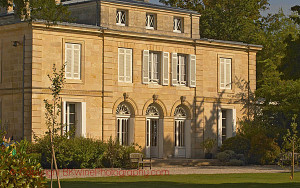 Oenoforos is one of the largest importers in Sweden. They also have a subsidiary called Carovin. The roles are divided so that Carovin handles the smaller niche producers and Oenoforos the major brands (although this is not always true). The group also includes the impressive Swedish wine production facility Nordic Sea Winery in Simrishamn. So when Oenoforos arrange a line-up of their range there will be a lot of wines. BKWine Magazine’s reporter Lennart Stengård picked out some of his favourites: a series of wines from Bordeaux and an enthusiastic producer in Nahe in Germany.
Oenoforos is one of the largest importers in Sweden. They also have a subsidiary called Carovin. The roles are divided so that Carovin handles the smaller niche producers and Oenoforos the major brands (although this is not always true). The group also includes the impressive Swedish wine production facility Nordic Sea Winery in Simrishamn. So when Oenoforos arrange a line-up of their range there will be a lot of wines. BKWine Magazine’s reporter Lennart Stengård picked out some of his favourites: a series of wines from Bordeaux and an enthusiastic producer in Nahe in Germany.
Read more on this in Lennart Stengård’s article on BKWine Magazine: A selection from the range of one of the largest importers, Oenoforos / Carovin: Bordeaux and Nahe.
Nine excellent “grower champagnes” to put on the list
There is a strong trend for “growers’ champagnes” today. This is a very interesting trend, towards more individualistic and characterful champagnes. But what is “growers’ champagne”? The term is used to describe independent producers who own their vineyards and make their own champagne, in contrast to the “houses” that actually own very few vineyards but instead buy grapes and then make the champagne in big production facilities. Virtually all the big and well-known names in Champagne, the ones that you and everyone else know, are “houses”. Few people are on the other hand familiar with growers’ champagnes.
Read about some excellent growers’ champagnes in Mattias Schyberg’s article on BKWine Magazine: Nine excellent grower champagnes to put on the list.
Periquita, Hexagon, Moscatel and more from JM da Fonseca | Britt on Forbes
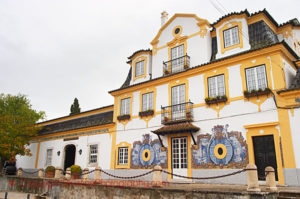 Periquita is one of Portugal’s and the world’s most famous wine brands. And probably one of the very first. The first bottle of Periquita was sold already in 1850. Today Periquita is still a very strong brand with worldwide recognition. Over 1.5 million bottles are produced annually. Periquita is made by wine company José Maria da Fonseca, located in the charming little village of Azeitão on the Setubal peninsula, south of Lisbon. José Maria da Fonseca founded his firm in 1834. This means that José Maria da Fonseca is Portugal’s oldest wine company for table wines (some port wine houses have been around longer). But they also make many other interesting wines.
Periquita is one of Portugal’s and the world’s most famous wine brands. And probably one of the very first. The first bottle of Periquita was sold already in 1850. Today Periquita is still a very strong brand with worldwide recognition. Over 1.5 million bottles are produced annually. Periquita is made by wine company José Maria da Fonseca, located in the charming little village of Azeitão on the Setubal peninsula, south of Lisbon. José Maria da Fonseca founded his firm in 1834. This means that José Maria da Fonseca is Portugal’s oldest wine company for table wines (some port wine houses have been around longer). But they also make many other interesting wines.
Read more on this on BKWine Magazine in Britt’s article originally published on Forbes: Periquita, Hexagon, Moscatel and more from JM da Fonseca | Britt on Forbes.
An insider’s view on why South Africa is one of the most exciting wine countries
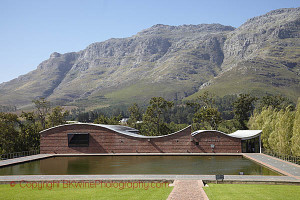 When the South African wine fair took place in Stockholm your BKWine envoy took the opportunity to talk to the country manager of The Wines of South Africa (WOSA), the wine expert Maja Berthas. South Africa was, until 1990, for the most part a closed wine country with very little contact with the rest of the wine world. Since then, progress has been extremely rapid, both for traditional wineries and newly established ones.
When the South African wine fair took place in Stockholm your BKWine envoy took the opportunity to talk to the country manager of The Wines of South Africa (WOSA), the wine expert Maja Berthas. South Africa was, until 1990, for the most part a closed wine country with very little contact with the rest of the wine world. Since then, progress has been extremely rapid, both for traditional wineries and newly established ones.
Read more on this exciting wine country in Mikael Karlin’s article on BKWine Magazine: An insider’s view on why South Africa is one of the most exciting wine countries.
If that makes you want to know more you can come on a wine tour to South Africa with BKWine.
If you want to see a whole lot more videos and photos from South Africa go to this Facebook group.
Wine tours
Here is some information about current and future wine tours with BKWine.
A river of wine: the wine journey along the meandering Douro Valley
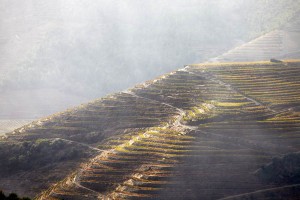 If there were no river, no one would have come up with the idea to grow wine in this inaccessible landscape. Scorching hot in the middle of summer, but wonderfully warm in October when the Douro Valley wine tour takes place. The river is the life-blood, it was thanks to the waterway that, at the risk of life, one could transport the wines down to the port of Porto for further shipping out into the world. Port wine and, more and more today, “table” wine. I.e. everything that is not fortified, which now belong to Portugal’s top wines. They are fast getting an international reputation.
If there were no river, no one would have come up with the idea to grow wine in this inaccessible landscape. Scorching hot in the middle of summer, but wonderfully warm in October when the Douro Valley wine tour takes place. The river is the life-blood, it was thanks to the waterway that, at the risk of life, one could transport the wines down to the port of Porto for further shipping out into the world. Port wine and, more and more today, “table” wine. I.e. everything that is not fortified, which now belong to Portugal’s top wines. They are fast getting an international reputation.
But perhaps it is time to rediscover the port wine too? If you think that vintage port are the very best then I challenge you to try some really good long-aged tawny. (On the tour you will.) There is a significant risk that you will be converted! Without a doubt, the Douro Valley is one of the world’s most spectacular wine landscapes, with wines that reach up to that level too. Join us on a trip of discovery. A visit to one of Portugal’s best restaurants is included!
Fabulous wines, fabulous countries, wine tour to Chile-Argentina
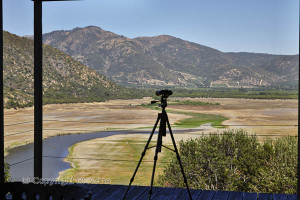 It’s a very special tour the one to Argentina and Chile. It’s long but also packed experiences. We have travelled around a lot in these two wine countries, so we know where to find the best wines, and we know many of the winemakers in person. There are of course many winery visits on the tour – that’s what it’s all about – but also much more. The gastronomy of course, which has a worldwide reputation. Both Chile and Argentina love meat, and they also have their very own version of “Kobe beef”. And they have outstanding vegetables. Not to mention that they are the home of potatoes.
It’s a very special tour the one to Argentina and Chile. It’s long but also packed experiences. We have travelled around a lot in these two wine countries, so we know where to find the best wines, and we know many of the winemakers in person. There are of course many winery visits on the tour – that’s what it’s all about – but also much more. The gastronomy of course, which has a worldwide reputation. Both Chile and Argentina love meat, and they also have their very own version of “Kobe beef”. And they have outstanding vegetables. Not to mention that they are the home of potatoes.
But there will be many other things as well. Perhaps the most spectacular is an incredible journey over the Andes, along the road. It takes a full day but one cannot for a moment take one’s eyes off the amazing country scenery. Up to 9000 feet. We have time for many other things as well: Buenos Aires, Mendoza, Santiago, Santa Cruz, and – of course – Valparaiso. The wine and food tour to Chile and Argentina is really something for the adventurous vinous traveller. In February, 2017.
Top quality wines, wine entrepreneurs and beautiful landscapes, the wine tour to South Africa
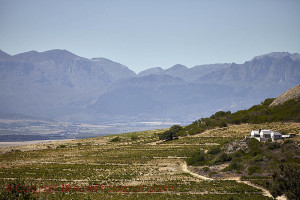 To call South Africa a New World country when it comes to wine is really wrong. A few years ago it celebrated the 350th anniversary of the first wine made in South Africa, so they made wine here before vines were grown in the Medoc. But at the same time it is correct. It was only after the end of apartheid that wine really started to accelerate in the direction of quality wines. Every time we come back to South Africa, we are reminded how fast things change.
To call South Africa a New World country when it comes to wine is really wrong. A few years ago it celebrated the 350th anniversary of the first wine made in South Africa, so they made wine here before vines were grown in the Medoc. But at the same time it is correct. It was only after the end of apartheid that wine really started to accelerate in the direction of quality wines. Every time we come back to South Africa, we are reminded how fast things change.
On the wine and food tour to South Africa we focus on showing you two sides of the country: first, some of the best wine producers in the country, and also to show you the incredible dynamism and entrepreneurial spirit that exists in this country. It is also an incredibly beautiful landscape. We go there just at harvest time, so there is plenty of activity in the vineyards and in the wine cellars.
We combine that with a lot of other things: Cape Town with its Waterfront and the Table Mountain, the Cape Peninsula with the Cape of Good Hope, Hermanus in Walker Bay (one of the “hot” new cold climate districts) and much more. With the option to combine with it with a safari and / or golf. Join us on the wine and food tour to South Africa in March 2017.
Don’t be an egoist! Share with your friends and other wine enthusiasts! Forward the Brief to your friends! Suggest that they sign up for a free subscription !
© Copyright BKWine







